what to do with wart on dogs foot
VIRAL PAPILLOMAS (CANINE)
![]()
| Oral papilloma in a domestic dog. | A similar scenario: |
DOES MY DOG HAVE WARTS?
Certain viruses are able to cause the growth of small round peel tumors commonly referred to as warts. Everyone who has every seen a drawing of a fairy tale witch knows what warts expect like so when the family unit dog develops pocket-size round skin growths, many people assume these, too, are harmless warts. It is of import to realize that viral warts are a specific condition and that a growth on the canis familiaris's skin may or may not represent a viral wart. Very few skin growths have a visual appearance that is characteristic, though there are some that do. Earlier assuming a growth is "only a wart" it is a practiced thought to learn most warts (viral papillomas) in example what you are seeing doesn't really fit and needs farther evaluation.
Human warts are round, somewhat apartment, and relatively polish. Viral warts in dogs tend to possess frond-like structures (called "fimbriae") creating more of a sea anemone or cauliflower-similar appearance, though they can be shine as well. The classical canine viral wart patient is a young dog with warts in or around the rima oris or eyes. In such cases where warts accept a typical appearance in a classic patient, diagnosis may be obvious but in older patients with warts in locations other than the face, other types of growths become more likely. Considering many types of growths can appear harmless but behave malignantly, removal and biopsy are oft recommended, peculiarly if the appearance of the growth and/or patient does not fit into what is considered typical.
It is usually not possible to identify a growth visually though in that location are some exceptions.
Do not be surprised if what you are assuming is a "wart" is really something else.
In dogs, we do not call these growths "warts;" nosotros use the more formal term "viral papilloma." Every bit in people, viral papillomas are caused past a papillomavirus though dogs and people have very different papillomaviruses and cannot transmit their viruses beyond species lines.
| WHAT Do THESE PAPILLOMAS LOOK Like? A "fimbriated" oral papilloma in a dog. The "fingers" of the sea anemone are its By far, the most common type of viral papilloma in the dog is the oral papilloma, caused by CPV1 (canine papilloma virus-1). Viral papillomas are classically "fimbriated," pregnant they are circular merely oft have a rough, well-nigh jagged surface reminiscent of a sea anemone or a cauliflower. They occur usually on the lips and muzzle of a immature dog (usually less than two years of age). Less unremarkably, papillomas can occur on the eyelids and even the surface of the heart or between the toes. Usually they occur in groups rather than equally solitary growths so if one growth is noted, check inside the oral fissure and lips for more. When the viral papilloma has a classic appearance like the ones shown above, biopsy is usually not needed to place the growth. In cases where in that location is ambivalence, however, biopsy will settle whatever questions. The good news, as nosotros volition review, is that most oral viral papilloma cases are mild and resolve on their own inside 2 months. | Sometimes viral papillomas |
HOW IS THIS VIRUS TRANSMITTED?
The infection is transmitted via straight contact with the papillomas on an infected dog or with the virus in the pet's environment (on toys, bedding, food bowls etc.). The virus requires injured skin to plant infection; healthy skin will not be infected. The incubation period is 1-ii months. This virus can only be spread among dogs. It is not contagious to other pets or to humans and information technology appears non to be contagious after the lesion has regressed. Recovered dogs cannot be infected with the same strain of virus but there are several viral strains.
To become infected, the domestic dog generally needs an immature immune system, thus this infection is primarily one of immature dogs and puppies. Dogs taking cyclosporine orally to treat immune-mediated disease may also have an outbreak of papilloma lesions.
The canine papillomavirus has been shown to be able to survive
at least two months at temperatures of 40º F only only vi hours at 98º F.
ARE VIRAL PAPILLOMAS Dangerous?
Non really. They should get abroad on their own as the dog's immune arrangement matures and generates a response against the papillomavirus. The process of regression normally takes one-2 months. If lesions are withal present after 3 months, treatment is recommended (run into below) and a biopsy may be needed to confirm that the growth actually is a viral papilloma. Severe cases can really interfere with chewing and swallowing just such heavy involvement is unusual.
Sometimes oral papillomas can become infected with bacteria of the oral fissure. Antibiotics volition be needed in such cases to command the pain, swelling, and bad jiff.
Handling
In most cases, treatment is unnecessary; i only allows the papillomas to go away on their ain. Occasionally an unfortunate dog volition have a huge number of papillomas, so many that consuming food becomes a problem. Papillomas can be surgically removed or frozen off cryogenically. Sometimes crushing several growths seems to stimulate the host'south immune system to assistance in the tumor regression process. In humans, anti-viral doses of interferon have been used to treat severe cases of warts and this handling is too bachelor for severely infected dogs though it is plush and yields inconsistent results.
More recently, a topical medication called imiquimod has been used in both canine and homo infections to aid boost allowed-mediated inflammation and thus facilitate destruction of the virus by the trunk. Imiquimod is being prescribed increasingly for dogs with viral papillomas. Skin irritation is frequently noted adjacent to the growth when imiquimod is in use but this is generally regarded equally a sign that the growth is regressing and the medication is working.
A enquiry group in Turkey in 2008 reported fantabulous success using a 10 solar day course of azithromycin. Treatment was able to remove all lesions within xv days with no recurrences reported in the subsequent 8 months of the written report. Subsequent results have been mixed; even so, this therapy is frequently utilized in more stubborn cases as the medication is reasonably priced and readily bachelor.
Sometimes some of the warts can be removed and made into a "vaccine" which is felt to stimulate the immune system in removing the tumors. A recombinant vaccine has been developed at Georgetown University. This vaccine employs only the Deoxyribonucleic acid of the virus needed to generate an allowed response. It can be used equally a preventive vaccine or as a treatment for an active infection, though information technology is even so considered an experimental product and requires a sample from the affected patient to make the vaccine every bit information technology is individualized.
For more details on the vaccine (including contact information), visit:
http://copv.info/8.html
OTHER TYPES OF PAPILLOMAS
The oral papilloma is by far the well-nigh common canine viral papilloma but it is certainly non the just kind. At that place are other papilloma viruses besides CPV-1. Here are other types of viral papillomas:
CUTANEOUS INVERTED PAPILLOMAS (Also Called "ENDOPHYTIC WARTS") - These are acquired by the CPV-two papilloma virus as well as other papilloma viruses. They can appear as single nodules on the belly (1/2- 1 inch across) with a pocket-sized key pore or they can be disseminated like a lumpy rash. They can also class betwixt the dog's toes.
PAPILLOMAVIRUS PIGMENTED PLAQUES - These are caused by several of the "Chi canine papilloma viruses" and unremarkably affect pugs and miniature schnauzers. They night, scaly and of variable size and are usually found on the belly. Different other papillomas, these do non backslide on their own except in pugs. They are capable of transforming into malignancy.
DIGITAL PAPILLOMAS - These are caused by the CPV-2 papilloma virus besides as other papilloma viruses and abound on the pes pads and between the toes. They tend to be painful and have potential to transform into malignancy.
These non-oral papillomas do non possess the classic fimbriated appearance of the oral papilloma and are likely to crave biopsy for identification. Every bit with oral papillomas, though, they can be expected to regress in most cases within a 2 month time frame. If they do not, the same treatments noted in a higher place can be practical.

![]()
Page last updated: 3/22/2021
delatorreacqualatithe.blogspot.com
Source: https://www.marvistavet.com/viral-papillomas-canine.pml
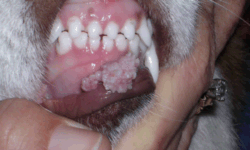
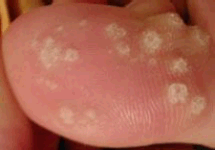
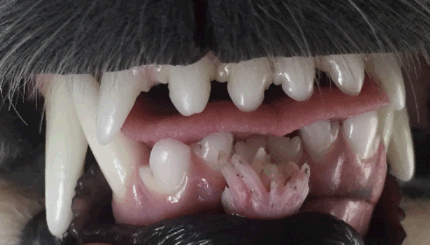
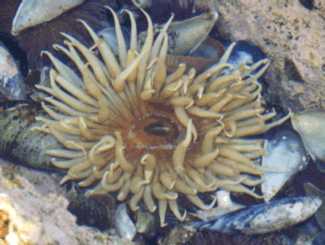
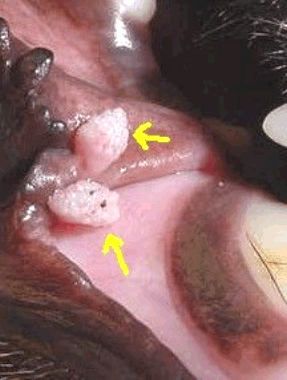
0 Response to "what to do with wart on dogs foot"
Post a Comment